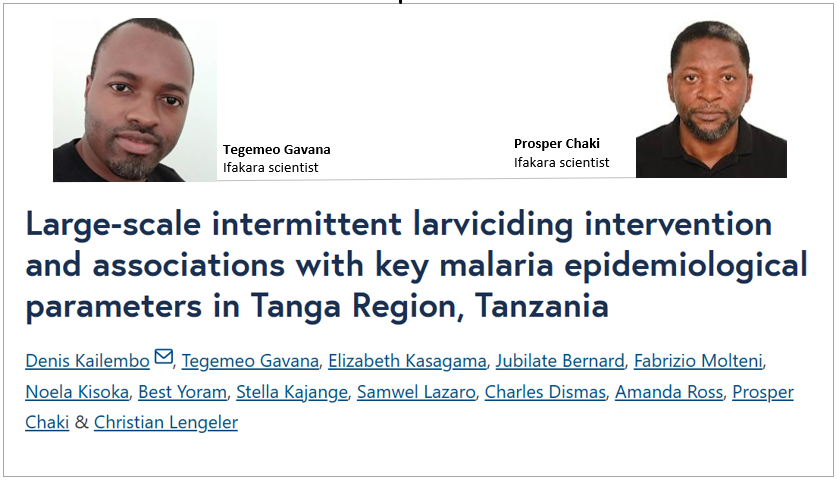
LARVICIDING: Small gains, big value in the fight against malaria

New studies conducted in Tanzania’s Tanga Region has found that larviciding – treating water bodies to kill mosquito larvae – has limited impact on reducing malaria transmission, even though the approach is financially feasible.
The findings are drawn from two linked studies: one examined how larviciding influenced malaria spread, while the other assessed the cost of implementing the intervention. Together, they show that although larviciding can be funded and scaled, there is no strong evidence that the method reduces malaria in the community under current implementation conditions.
Why these findings matter
The studies, published on Malaria Journal in October, come at a time when Tanzania is considering scaling-up larviciding as part of its national malaria control strategy, alongside proven measures such as insecticide-treated nets and indoor residual spraying.
“From a cost perspective, the intervention is potentially feasible for scale up, but the decision depends on clear evidence of epidemiological and entomological impact, which are currently mixed and limited,” the scientists noted. They recommend further research to determine where, when, and how larviciding could be most effective.
Research led by Swiss and Tanzanian institutions
Both studies were conducted by researchers from the Ifakara Health Institute (IHI) and the Swiss Tropical and Public Health Institute (Swiss TPH), with collaboration from the National Malaria Control Programme (NMCP) under the Tanzania’s Ministry of Health, and the President’s Office – Regional Administration and Local Government (PO-RALG). Key contributors from Ifakara included Tegemeo Gavana and Prosper Chaki.
What is larviciding?
Larviciding is a mosquito control method that targets mosquitoes at the earliest stage of their life cycle. It involves applying biolarvicides to water bodies where mosquitoes breed, with the aim of preventing larvae from developing into adult mosquitoes thereby reducing the population capable of spreading malaria.
How the pilot was conducted
The pilot study, designed as part of a broader plan for national scale-up, was conducted from June 2022 to April 2024 across three councils in Tanga Region, representing high, moderate, and low malaria-risk areas. Trained community volunteers applied locally made biolarvicides three times a year during the rainy seasons, working through existing local government structures.
To assess how larviciding influenced malaria spread, researchers monitored malaria case numbers and test positivity rates, comparing them to neighboring councils where larviciding was not implemented.
The cost analysis study captured financial data from budgets, receipts, and stakeholder discussions, calculating cost per person protected per year (pppy), cost drivers, scale up projection scenarios.
What the studies found
The epidemiological analysis showed no substantial reduction in malaria cases or test positivity rates linked to the seasonal larviciding approach.
Key observations include:
- No noticeable reduction in malaria across all age groups.
- High-risk areas saw no decrease in malaria incidence.
- Moderate- and low-risk areas saw some slight reductions of malaria, but the evidence was not strong enough to be conclusive.
Following these findings, the scientists underlined that current designs of applying larvicides only seasonally may be insufficient.
They emphasized that a different approach may be needed, stating that “more studies considering continuous year-round implementation… could generate further evidence on the contribution of larviciding to malaria control.”
Linking cost to impact
The cost study found that larviciding is modestly affordable, with an average cost of approximately USD 0.66 per person protected per year when implemented seasonally (three-round in a year).
However, researchers cautioned that scaling up nationwide – covering all 184 councils – would require careful budget planning and on stronger evidence of epidemiological and entomological effectiveness.
What this means for Tanzania
Although the pilot study did not show a strong impact under the current implementation approach, larviciding remains a promising malaria control tool – especially if planning, targeting, and coverage are strengthened.
As Tanzania continues to refine its malaria control strategy, these findings provide guidance on how larviciding may fit alongside other proven control measures and tools. Researchers conclude that stronger evidence on real-world effectiveness will be key in deciding whether to expand larviciding as a national intervention.
Read the full study: Larviciding influence on malaria spread, here | Larviciding cost-analysis, here.
